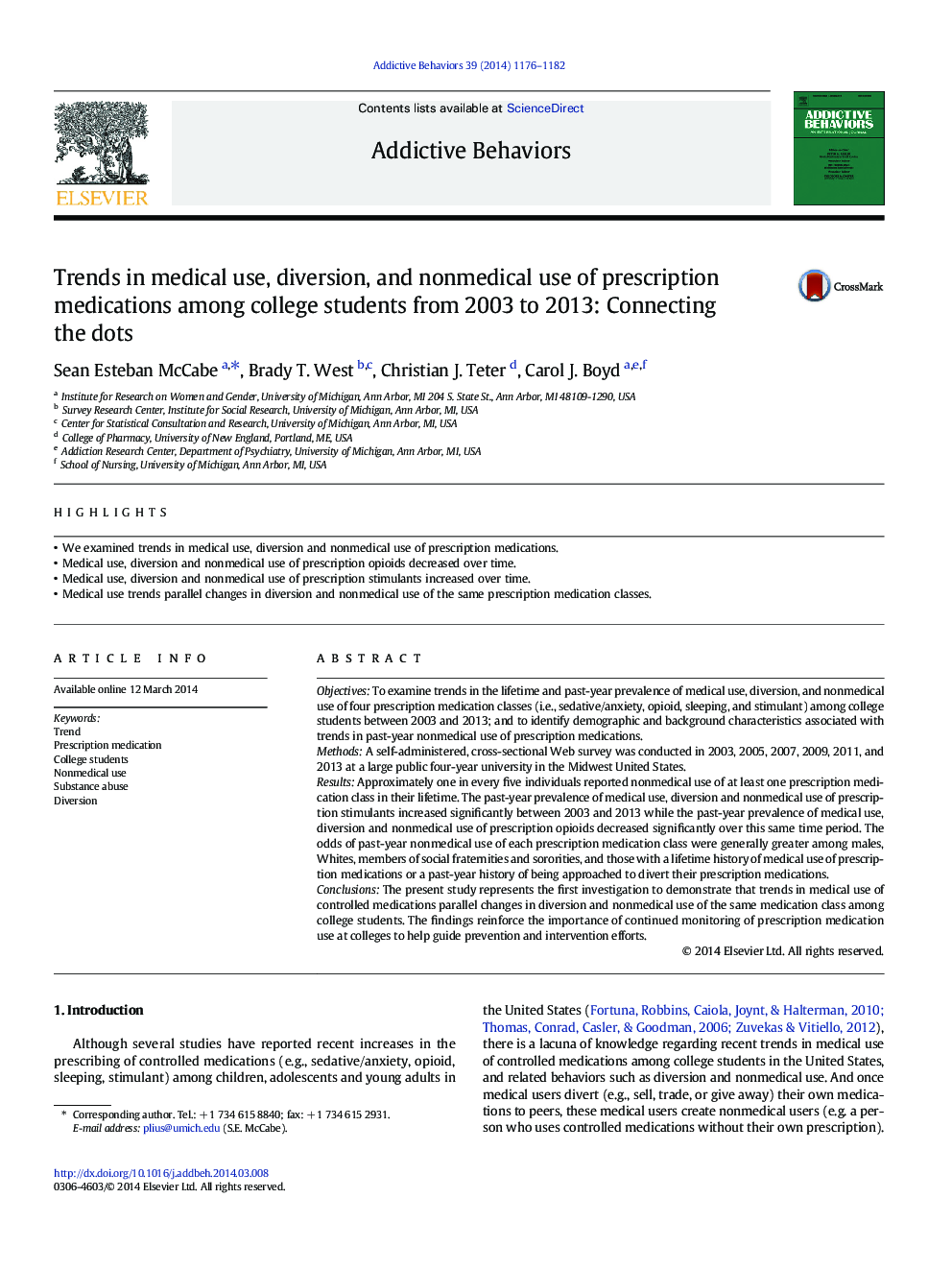| Article ID | Journal | Published Year | Pages | File Type |
|---|---|---|---|---|
| 898828 | Addictive Behaviors | 2014 | 7 Pages |
•We examined trends in medical use, diversion and nonmedical use of prescription medications.•Medical use, diversion and nonmedical use of prescription opioids decreased over time.•Medical use, diversion and nonmedical use of prescription stimulants increased over time.•Medical use trends parallel changes in diversion and nonmedical use of the same prescription medication classes.
ObjectivesTo examine trends in the lifetime and past-year prevalence of medical use, diversion, and nonmedical use of four prescription medication classes (i.e., sedative/anxiety, opioid, sleeping, and stimulant) among college students between 2003 and 2013; and to identify demographic and background characteristics associated with trends in past-year nonmedical use of prescription medications.MethodsA self-administered, cross-sectional Web survey was conducted in 2003, 2005, 2007, 2009, 2011, and 2013 at a large public four-year university in the Midwest United States.ResultsApproximately one in every five individuals reported nonmedical use of at least one prescription medication class in their lifetime. The past-year prevalence of medical use, diversion and nonmedical use of prescription stimulants increased significantly between 2003 and 2013 while the past-year prevalence of medical use, diversion and nonmedical use of prescription opioids decreased significantly over this same time period. The odds of past-year nonmedical use of each prescription medication class were generally greater among males, Whites, members of social fraternities and sororities, and those with a lifetime history of medical use of prescription medications or a past-year history of being approached to divert their prescription medications.ConclusionsThe present study represents the first investigation to demonstrate that trends in medical use of controlled medications parallel changes in diversion and nonmedical use of the same medication class among college students. The findings reinforce the importance of continued monitoring of prescription medication use at colleges to help guide prevention and intervention efforts.
